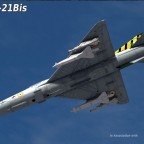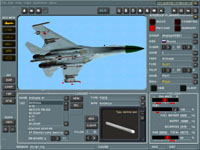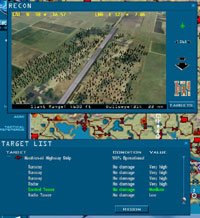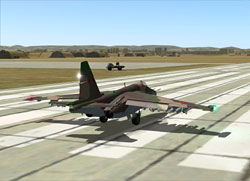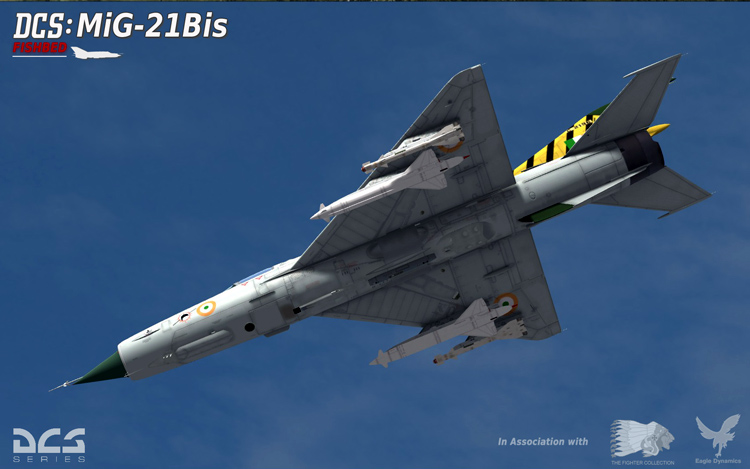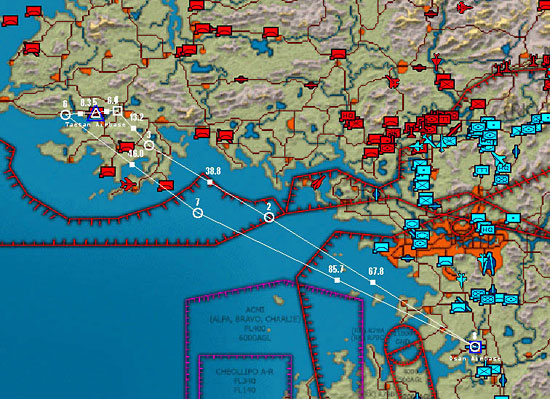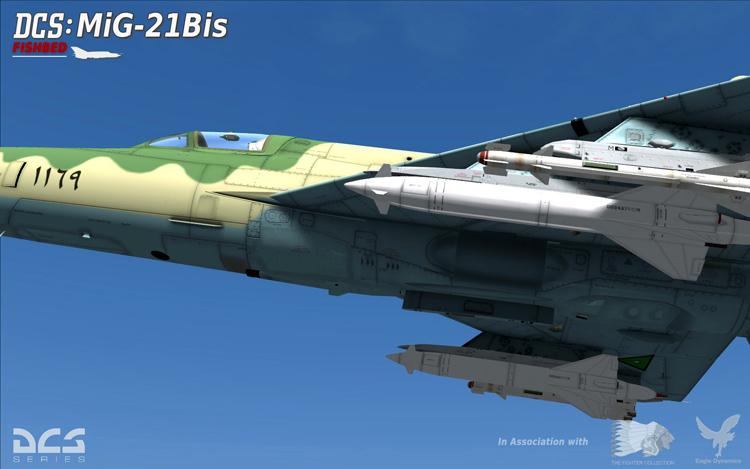
Cat: How closely modeled will the RP-22SMA “Jay Bird” radar be? I’ve seen on the ED forums that you have some pretty detailed technical documentation, and you’ve used a document located here as an example of the operating system for the unit. We’ve also seen a beautiful example of a ground clutter test on the ED forums. Do you plan on modeling any of the following:
a) Three anti-jamming modes (The three top-left buttons on the front-panel control unit).
b) Speed-selection mode (low-speed target mode, second from the right on the front panel control).
c) Weather compensation mode (Top right on the front panel control unit).
d) IFF interrogator (Bottom left on front panel control unit).
e) Locked-beam mode for X-66 missile employment (Block 19 control panel right switch, front right cockpit).
f) Compensation channel and low-altitude intercept mode (Block 19 panel center switch).
g) Operating limitations due to burn-off of liquid coolant.
h) Do you have any information on Panel 19b? I’ve never seen any.
i) Just a shot in the dark: If a LAZUR aircraft is the subject, is the LAZUR system itself to be modeled?
Laszlo: The radar implementation is under heavy development so I can’t tell you what should be the final product radar capability, but in general all of the RP-22SMA radar modes in your questions “a” through “g” will be available and simulated. According to my road map, all of these features will be modeled.
Regarding question “h”… panel 19B controls the radar frequency and emitting. The switches are…
Instantaneous erase (МГН. СТИР.) – temporarily erases the radar screen in search mode (1-2 sec).
Radar screen illumination gain (ДЛИТ. СВЕЧ.) – not intended to be used by pilot, pre-flight set-up by technician.
Radar frequency selector (УР – training frequency, does not allow missile to be launched because it is not synchronized with the radar; БР – combat mode, full radar functionality enabled).
Question “i”… the RSBN version plane is the subject due to no LAZUR GCI modes exist in the current DCS environment.
Cat: In SEARCH mode operation, are we going to see cloud returns as well as ground clutter? What about the jamming light?
Laszlo: I think the heavy cloud option (Meteo / Weather JAM) could be possible as the ground clutter is already modeled but as I already mentioned it’s a hard thing due no radar simulation exist in the previous DCS products. It means the ED devs need to build a radar implementation from scratch. The jamming lights also will be working as the other radar function.
Cat: In the INTERCEPT mode, are we going to get the “Seeker Ready” light and tone on missile lock, and the launch light when in optimal firing condition?
Laszlo: Yes exactly. These things will be modeled as they work in real life. So it’ll represent and follow the launching conditions as well.
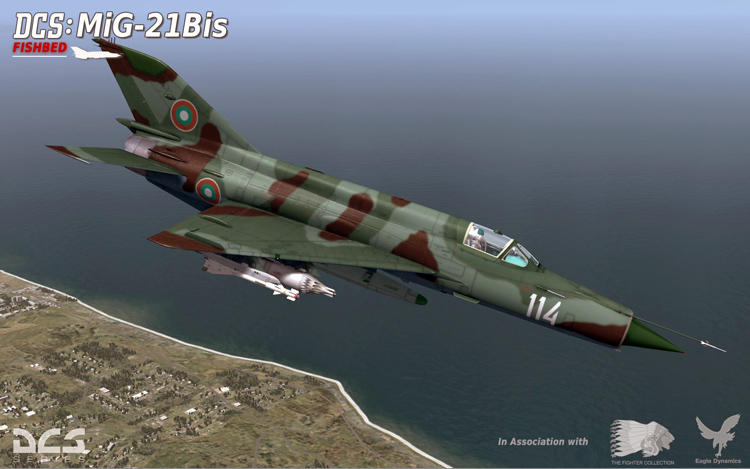
Cat: The SPO-10 Sirena-3 RWR is interesting to me. In your Flaming Cliffs 2 adaptation, it appears only partially functional, with only the four lights showing target direction and lock-ons working. I’ve always wanted to know what the red lights are, and whether the “Sirena” has any other functionality. Can you share any detail on how the “Sirena” will work in the sim?
Laszlo: In the Flaming Cliffs 2 version we can’t simulate the SPO-10 lights due in real life the SPO-10 lights use a different blinking method to show the radar emitting. That’s the reason why I used a different color in the Flaming Cliffs 2 version. In the current version the SPO-10 will work differently.
In case the Sirena owner is “lit-up” by radar in search mode, they will get a sound signal as well as visual signal (light on display) that will happen according to search period of detected radar.
Upper left light is turned “on”: Your threat is forward left from your current position (1/4-3/4).
Both upper lights are turned “on”: Your threat is straight ahead (0/4).
Upper right light is turned “on”: Your threat is forward right from your current position (1/4-3/4).
Both right lights are turned “on”: Your threat is on your three o’ clock (4/4).
Lower right light is “on”: Your threat is coming behind and right from your current position (1/4-3/4).
Both rear lights are “on”: Aaarrrgh! He is at your six!
Lower left light is “on”: Your threat is coming behind and left from your current position (1/4-3/4).
Both left lights are turned “on”: Your primary threat is at your nine o’ clock (4/4).
As your threat is closer and closer to you, you can expect to hear / see your signals up to three times more often. Density of your sound signal increases rapidly and your lights are flashing now this means that radar of your threat is tracking you now (oh no!). As distance from your threat decreases, finally all channels of Sirena3M will become active (and you won’t have a good idea what is going on). This depends on strength of your threat’s radar. Thus the distance from your threat when this will occur is not fixed.
Cat: I’ve read that the ASP gunsight was developed from World War II American gyro sights used in aircraft like the P-51 Mustang fighter. Is that true, and in the case of the ASP, will the reticle-size automatically adjust for the target if you have a radar lock on it?
Laszlo: Yes, that could be true but I have never seen any evidence about it. During radar interception in automatic following mode, the radar is locked on target, and will automatically follow the target within ±30° zone in azimuth and elevation, calculate missile launch zone, and show distance to the target on the optical sight (ASP base needle). So if the pilot uses guided missiles for the attack, the radar computer automatically calculates launch zone, launch authorization (ПУСК) and attack break (O – Oтворот). If the pilot uses unguided missiles or guns for the attack, the radar computer sends distance to target to optical sight – ASP. In this case, “break attack” instruction is being issued at the distance of 600m but the piper reticle-size didn’t adjusted by radar. So you can’t see the lock signal in your ASP like on the HUD of western aircraft.
Cat: If this is a SAU aircraft, is the SAU-23 / RSBN-6 autopilot and navigation system modeled, and if so, which modes will be supported? Is auto-land one of them?
Laszlo: The plane is equipped with an SAU-23ESN automatic flight control system (APCS) and POLYOT-01/RSBN-6S navigation system. Currently no RSBN feature exist in DCS:World in this case we use a modified RSBN equipment that in use for Bis’s in several air forces. That’s mean we can use the default TACAN and ILS channels for navigation and landing. Also the autopilot auto-land auto-approach and other functions will be exist in the final product.
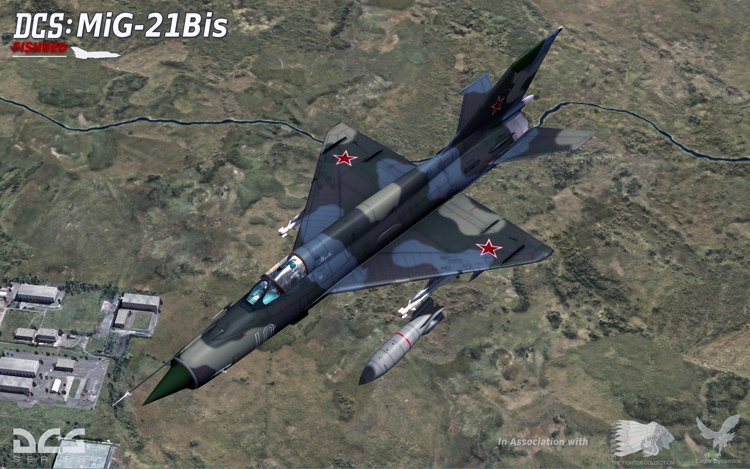
Cat: You’ve posted some amazing photos of weapons to be employed by your creation, including adaptations of helicopter gunpods and several new high-drag bombs. Where did you get the idea for those new weapons?
Laszlo: As I mentioned before, I served in a firing range for 12 years. One of my qualifications and skills was an EOD expert and Russian ordnance SME. I saw many times how these things works in real life and was impressed by the different construction behind a simple design. That’s the reason why I decided to model these weapons for MiG. One of the less well know things about MiG-21 weaponry is the high-drag bombs usage. Most countries use these bombs to take advantage of the MiG-21’s low level flying capability. The ASP doesn’t have a CCRP mode and the ASP can set interception angle max. 6° 30′ (the aiming dot is at the bottom of the ASP glass and it’s barely visible) for retarded bombs the pilots use spatial correction tables so when you set 6° 30′ interception you still have to release the bomb after the dot has passed the target.
Cat: Will the use of your new weapons be restricted to the MiG or will they be able to be equipped by the Ka-50 and Su-25T?
Laszlo: At the moment I have no idea how my new weapons usage will be available for the other planes. It’s under development.
Cat: We’re fascinated by the X-66 (AS-7 “Kerry”) missile. It was Russia’s first air-to-ground, guided tactical missile, and it appears to take a fine hand in a dive to deploy it. Can you describe how it is employed? Being a radar beam-rider, derived from the RS2 / K5 / K55 air to air missile family, it depends on a locked air-to-ground beam, but the RP-22SMA does not appear to have an air to ground mode other than the locked-beam mode set up by the right switch on Panel 19, at the front right of the cockpit. Does this mode show ground returns, or is a visual lock through the HUD reticle required?
Laszlo: The H-66 uses the radar fixed-beam feature (that is in use for the radar-beam controlled RS-2US missile) that method also in use during ground target attacking (mentioned earlier). So if you have a working radar, then switch on the fixed beam mode, and the radar starts to calculate the distance between the target and your aircraft. After you reach the launch distance and launch your H-66, the missile receives your radar signs for their maneuver so you need to provide a continuous radar emission as well. During missile flight you simply have to put your piper at your target until the missiles reach their target. No lock or any other pilot friendly method available during this weapon usage.
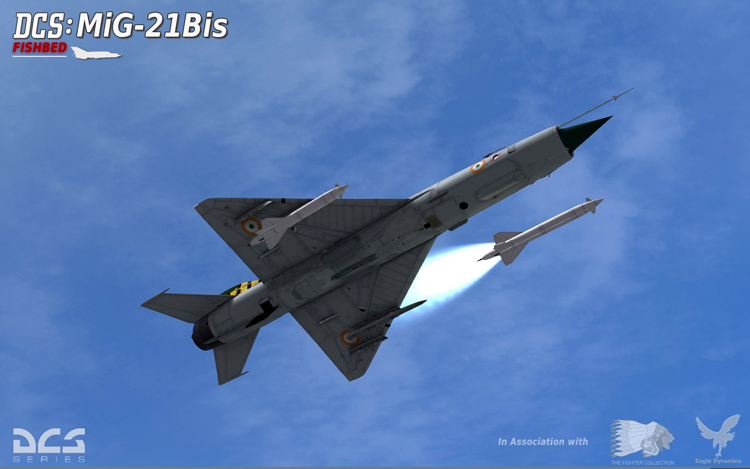
Cat: Due to its age, I’d guess that the MiG does not have any sort of CCIP or other method for precision bomb delivery, such as that found in U.S. aircraft like the F-16 or A-10. Is that one of the reasons for the grid-like display on the combining glass, for placing bombs? Will the MiG’s weapons delivery system allow for pylon selection and selection of number of weapons to employ (i.e. the weapons panel at top left of the cockpit front)?
Laszlo: The MiG-21’s primary role was a front-line fighter. They have not so much precision bomb delivery capability like other attack planes, like the Su-25. In real life, the pilots use both fixed reticle and the ASP piper for bomb delivery. Yes, you’re right. At the front left panel contains the weapon selector switches. Most cases have no asymmetric payload available for Russian planes. That’s still valid for the MiG-21 too so you can use and handle the UB pods, S-24 rockets, and bombs in pair only. This is not valid for A2A missiles usage. You can select these missiles one-by-one or pylon pairs according your payload configuration.
Cat: The MiG has a central warning system called SORC, with the master caution at panel front, center. SORC does not have voice prompts. Where are you getting the sounds for SORC and the Sirena radar warning system?
Laszlo: Yes, you’re right. No voice caution available for SORC and Sirena systems neither. Both systems use a same default high pitch sound for warning. That sounds like a switch, and other sounds are already recorded from the real plane.
Cat: Are there new effects for the incendiary bombs? Can you describe what it is like to employ the GUV-8700s?
Laszlo: Unfortunately no new effect exist for incendiary bombs but as you know everything is subject to change (wink). At this time, I have no chance to test the GUV-8700 pod yet but it uses the same gun as the Mi-24 so it’ll be fun, I guess.
Cat: The screenshots you posted at the DCS site shows the limitations of the RP-22 radar. Can you describe what it’s like to try to fight in the MiG on DCS’s modern battlefield? That’s a fight that can still happen in the real world, today.
Laszlo: That’s a good question indeed. The MiG-21Bis has a lot of advantages and disadvantages. For example, it could be good in maneuvering at low speed and low altitude, they have a small radar cross section and so on. Their systems are more endurable than the modern airplanes systems. Basically the MiG-21 doesn’t have much sensitive equipment onboard. It is very durable, capable of flying with few basic systems on-line. The most sensitive parts — proven in the few last wars — are the engine (central fuselage) and engine exhaust (main target for IR missiles).
I had several conversations with former NATO and VVS pilots about the MiG-21 especially Bis / SMT capability, and “what-if” scenarios about what the MiG-21 can do in the real fight. Basically in the past Russian and NATO forces use different tactics. The MiG-21 mainly belongs the GCI that’s the part of the Warsaw-Pact air force doctrine. It is capable to operate without them, but the plane’s primary capabilities belong to the good GCI control as nowadays. In other aspects, interceptor fighters like MiG-21 are created to engage bombers (book rule) and avoid fighter-to-fighter combat. Besides, all of these the MiG-21 can be used as a general fighter aircraft. It is capable of engaging air targets, cover transport airplanes, attack ground targets, convoys, bases, or attack AWACS using a low-high-low flight profile as well.
Cat: Thank you Laszlo for your time, most interesting answers, and the exclusive work-in-progress new screenshots! DCS: MiG-21Bis Fishbed is truly one to watch for any aficionado of fast-jet combat simulations.
We want your Feedback. Please let us know what you thought of this article here.
Download all 30 images in the original 1680×1024 size (9.4MB).

